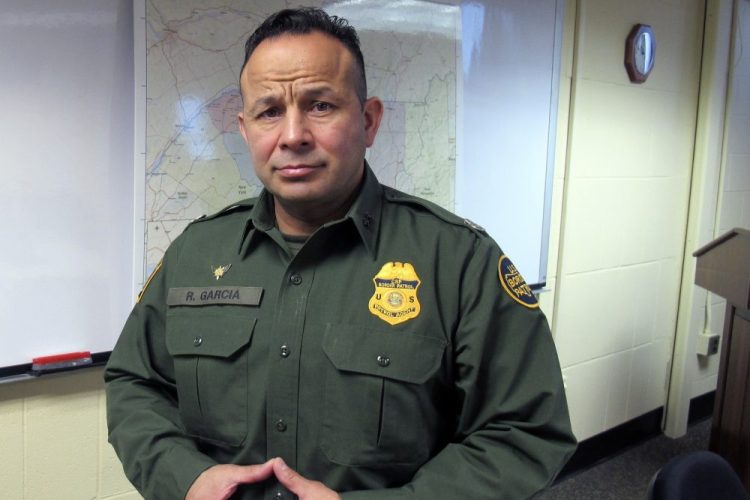SWANTON, Vt. — The number of people apprehended for illegally crossing from Canada into the United States along its northern border has nearly tripled over the past three years, and a growing portion are Mexican citizens, according to federal data.
One Mexican man who crossed illegally to work on a Vermont dairy farm said it was easier than trying the southern border.
U.S. Customs and Border Protection statistics obtained by The Associated Press after a public records request provide new detail on what was apparent anecdotally: Along the border from Maine to Washington, 446 of the 1,586 illegal crossers apprehended in the 2019 fiscal year were Mexican, or 28 percent. That’s up from 20 of 558, or just 3.6 percent, in 2016.
The numbers also increased for Romanians – many identified as ethnic Roma – and other nationalities, such as Haitians and Indians. Those tallies don’t include apprehensions for reasons other than illegal crossings, such as overstaying visas.
This year’s data will likely look different because of travel impacts from the COVID-19 pandemic. Customs and Border Protection spokesman Michael McCarthy said there’s been “a decline in illegal entries” since the arrival of the virus and the border closure, though he didn’t have specific numbers. But they’re expected to pick up again as travel resumes.
A former U.S. Department of Homeland Security attache in Ottawa said she wasn’t surprised by more illegal crossings from Canada, though that total remains less than 1 percent of southern border apprehensions.
“Like water at the lowest point, migrants will find their best way in,” said Theresa Brown, now director of immigration and cross border policy at the Bipartisan Policy Center in Washington.
The Vermont farm worker, Diego, said he illegally crossed from Canada in 2017 because it was safer and cheaper than crossing the southern border.
“The person who was going to get us across was recommended by a trusted friend and there was no risk that we were going to be cheated,” said Diego, 26, who’s from the Mexican state of Tabasco and spoke in Spanish. He spoke on condition that his full name not be used because he’s in the U.S. without authorization.
Diego arrived via the northern border’s busiest sector for apprehensions: a 295-mile stretch across northern New York, Vermont and New Hampshire that had more than half the northern border arrests last year, up from 38 percent in 2016. An informal review of criminal cases filed against people apprehended in Vermont and upstate New York over the last two years indicates most were trying to reach areas away from the border, such as New York City.
The sector’s chief border agent, Robert Garcia, attributes its increase in illegal crossers to its proximity to Toronto and Montreal and the U.S. East Coast; increased focus on security along the U.S. southern border; and changes in Canadian entry requirements.
In 2016, Canada lifted its requirement that Mexican citizens apply for visas to enter the country, as part of efforts to strengthen ties with Mexico. A similar change for Romanian citizens took effect in 2017.
The Canadian government “monitors its immigration system closely” and takes seriously the responsibility for the shared border with the U.S., a statement from Immigration, Refugees and Citizenship Canada said.
“Visa-free travel does not guarantee entry into Canada,” it said, noting such travel could be suspended if necessary to preserve the system’s integrity.
Diego said he and four adults he didn’t know flew to Toronto from Mexico, waited days in a motel before traveling overland to Montreal, then took a taxi to a town near the Quebec-Vermont border. A guide took them to the border and told them that once they crossed, they should run across a plowed field to someone who’d be waiting.
“They were there and they took us,” he said. “We had the luck.”
Diego said the trip cost about $2,500, and he heard the person who arranged his passage was later arrested and deported to Mexico.
In another recent smuggling case, a Canadian citizen born in El Salvador was extradited to the United States and charged with running a yearslong operation that crossed people from Canada into Vermont and New York.
The Border Patrol says smugglers are willing to move around. In Maine – statistically one of the quietest areas on the border – a defendant apprehended in December admitted making six trips to northern Maine in a month to transport about 12 people to New York City.
“If that made the hair on the back of your neck stand up a little bit, I would say it did on mine as well,” said Jason Schneider, the Border Patrol’s acting chief patrol agent for the sector that includes all of Maine.
AP Data Editor Meghan Hoyer in Washington contributed to this report.
Send questions/comments to the editors.



Comments are no longer available on this story